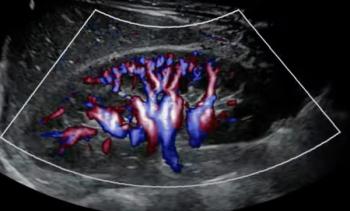
PET Technique Harnesses Head Movement to Improve Resolution
Using an external tracking device can lead to super-resolution that can potentially improve neurological disorder detection.
A new PET imaging technique uses the head motions that usually cause problems during brain imaging to produce scans that have the potential to detect neurological disorders, including Alzheimer’s disease, at their earliest stages.
In a poster presented during the Society of Nuclear Medicine and Molecular Imaging 2021 Annual Meeting, investigators from the Gordon Center for Medical Imaging in Boston showed how combining PET with an external motion tracking device can produce highly detailed brain images. It’s a process dubbed super-resolution, they said, and it could lead to faster diagnosis and treatment.
For more SNMMI 2021 coverage, click
Typically, unwanted patient movements during scanning degrades image quality. But, the team, led by Yanis Chemli, MSc, Ph.D. candidate at the Gordon Center, determined focusing on and measuring those movements can actually improve resolution.
“This work shows that one can obtain PET images with a resolution that outperforms the scanner’s resolution by making use, counterintuitively perhaps, of usually undesired patient motion,” Chemli said. “Our technique not only compensates for the negative effects of head motion on PET image quality, but it also leverages the increased sampling information associated with imaging of moving targets to enhance the effective PET resolution.”
For the study, the team performed moving phantom and non-human primate experiments on a PET scanner with an external motion tracking device that continuously captured extremely precise measurements of head movements. They also completed static reference PET acquisitions without induced movements.
The researchers combined data from the PET scanner and the external tracker, and they recovered PET images that had noticeably higher resolution than what the static reference scans were able to achieve.
Although this super-resolution technique has only been tested in pre-clinical environments, work is underway to extend it to human patients. Ultimately, Chemli said, the technique could have a significant impact on brain disorders, specifically Alzheimer’s.
“Alzheimer’s disease is characterized by the presence of tangles composed of tau protein. These tangles start accumulating very early on in Alzheimer’s disease – sometimes decades before symptoms – in very small regions of the brain,” he said. “The better we can image these small structures in the brain, the earlier we may be able to diagnose and, perhaps in the future, treat Alzheimer’s disease.”
For more coverage based on industry expert insights and research, subscribe to the Diagnostic Imaging e-Newsletter
Newsletter
Stay at the forefront of radiology with the Diagnostic Imaging newsletter, delivering the latest news, clinical insights, and imaging advancements for today’s radiologists.




























